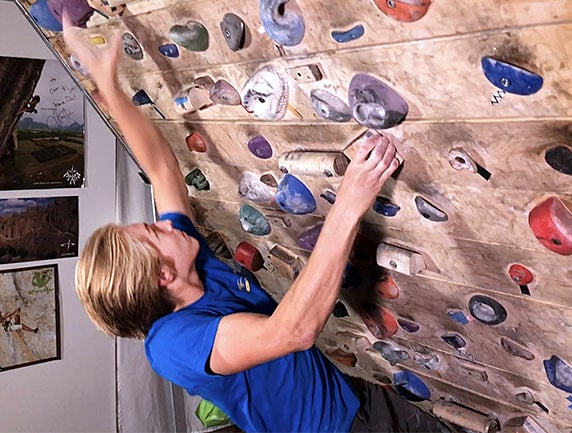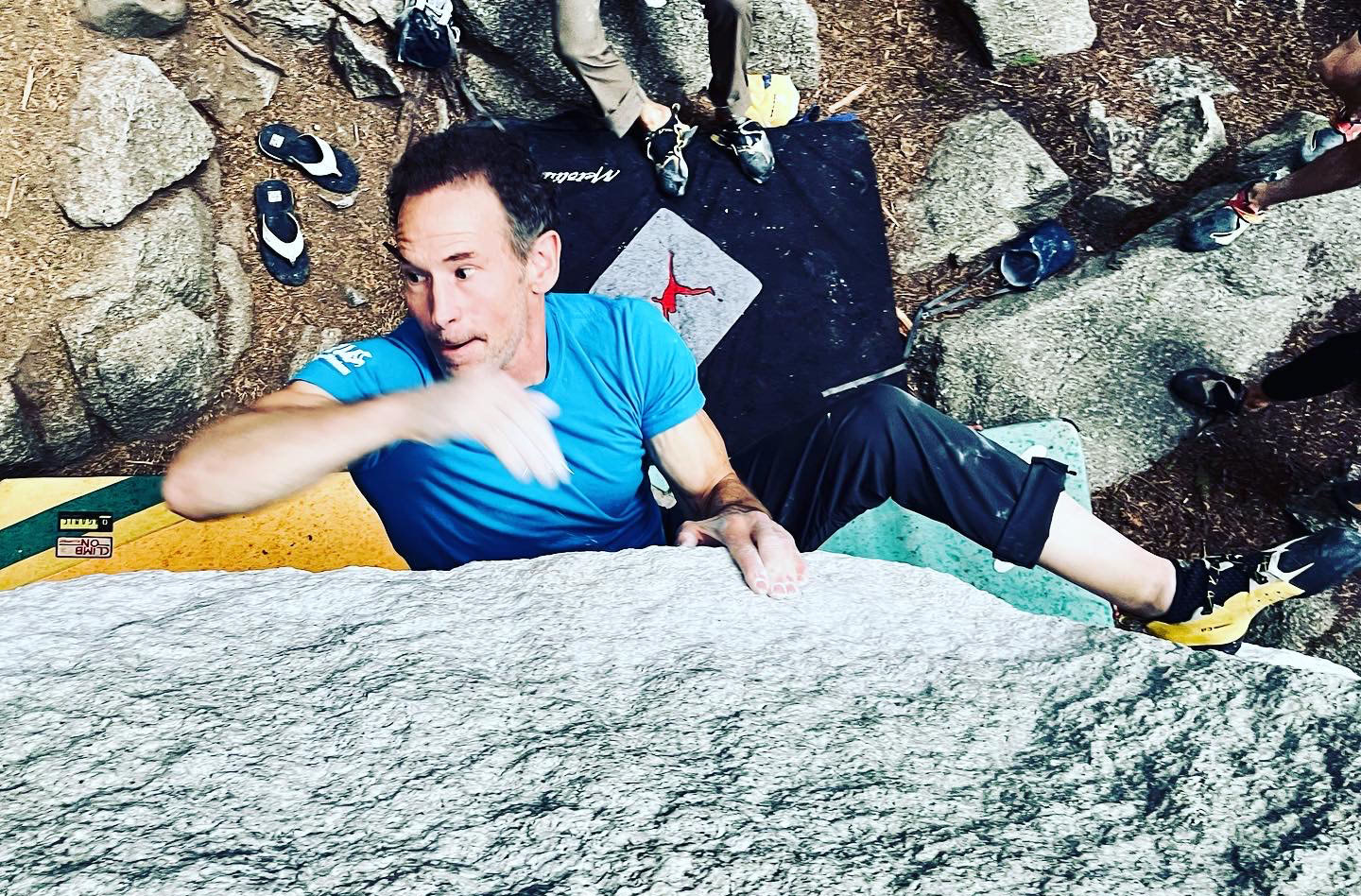When’s the last time you took a rest day? How about an entire rest week? If you can’t remember, it’s time to prioritize recovery. Here’s how to recharge right.
It’s not easy being human. We mere mortals can’t actually do everything that we dream up. There’s beauty in the process of figuring out how to align vision with reality, but that doesn’t erase the frustration.
Climbers understand this dichotomy well. Even the most enthusiastic among us can’t climb day in and day out for too long before the body starts to talk back. Split tips, sore muscles, aggravated tendons, and overall fatigue are the body’s way of telling us that we need to back off. Ignoring these signals just makes things worse.
But making the conscious decision to rest? That’s the real workout. If you’re reading this, there’s a good chance that climbing means more to you than just another way to pass the time. It’s hard to pump the brakes on passion. Just remember that growth happens in the slow moments, not the fast ones. Adaptations set in during periods of rest when the body finally gets the chance to process the stress inflicted upon it, a process called “supercompensation”. In short: rest makes progress possible.
Recharge Days
Don’t wait until you’re already exhausted to rest; build it in along the way so you don’t hit a wall in the first place! Start with a regularly scheduled rest day each week. I actually prefer to call them “recharge days” because that name speaks to their real value. Recharge days keep the battery from running too low.
Set aside at least one day per week for true rest and relaxation. This means no structured training. Opt for walks, yoga, stretching, and foam rolling to keep the body loose and the blood pumping—but nothing that gets your heart rate up very high.
On the other six days in the week that you don’t climb, feel free to mix things up. Go for a run, hop on your bike, lift some weights, or anything else that gives your climbing-specific muscles and tissues a break.
Recharge Weeks
To truly reap the benefits of hard training and improve as a climber, though, that’s not quite enough. The load will continue to accumulate over time and eventually overflow. It takes more than a weekly recharge day or two to wipe the slate clean.
It’s smart to upgrade your recharge day into a recharge week every once in a while. Pencil one in after four to six weeks of heavy training. But don’t think of it as a vacation. Not that there’s anything wrong with taking a break—everyone needs to press pause sometimes to keep burnout at bay. Time off has its downsides though. Full rest from climbing for a week or more puts climbers at risk of detraining. You stand to lose half of the mitochondria that you gain via training after seven straight days away from climbing, which leads to noticeable losses in endurance. Strength losses follow soon after around the two week mark.
No need to fear detraining during a recharge week. You won’t be spending it flat on your back. Climbers continue to train during this time, just at a reduced total volume. Stick to your regular schedule but cut the length of each session in half. In practice, this looks like warming up to your limit and then barely skimming the surface of that peak intensity before cooling back down. These shortened sessions offer a taste of the usual load—just enough to keep your body on its toes instead of going into hibernation mode. Top it off by replacing one of your usual training sessions that week with a second rest day or a cross-training alternative.
After the recharge week, pick up your training program right where you left it. The relative break will leave you feeling more physically and mentally energized than before.
Nutrition Needs During Recharge Time

PhysiVantage athlete Jonathan Siegrist swears by Powerplex for optimal recovery—especially during recharge time!
Be careful not to restrict your food intake during these recharge days and weeks. It’s easy for athletes to assume that they don’t need as much food if they aren’t training as much or as hard. But recovery takes energy too. Provide your body with all the nutrients necessary to get the job done. Protein is especially important during recharge time to promote supercompensation and maintain strength. Focus on quality sources of protein (like lean meat, legumes, or PhysiVantage Weapons-Grade Whey or Powerplex formulas) at regular intervals throughout the day. Above all, listen to your body. Hunger is a sign that your body is working hard to repair and rebuild. Adequate rest + adequate nutrition = productive recharge time that sets the stage for continual improvement.
Key Points:
- Schedule recharge days into your regular training weeks. Be sure to take one full rest day per week and incorporate cross-training into your schedule to promote day to day recovery.
- Upgrade your recharge day to a recharge week after four to six weeks of heavy training for more thorough recovery. Stick to your regular schedule but cut your sessions in half and replace one climbing day with an extra rest day or cross-training alternative.
- Keep up with energy intake during recharge time, with an emphasis on protein for repair and rebuilding.
Related Articles:
- 3 Tips for Off-The-Wall Cross-Training
- Fueling for Sending with Amity Warme, Climbing Dietitian
- Performance Nutrition Through the Lens of Top Pro Climbers
- Will Running (and Other Cardio Exercise) Help Your Climbing?
- Self-Care for Routesetters: Nutrition Tactics
Copyright © 2000–2023 Lucie Hanes & Eric J. Hörst | All Rights Reserved.











